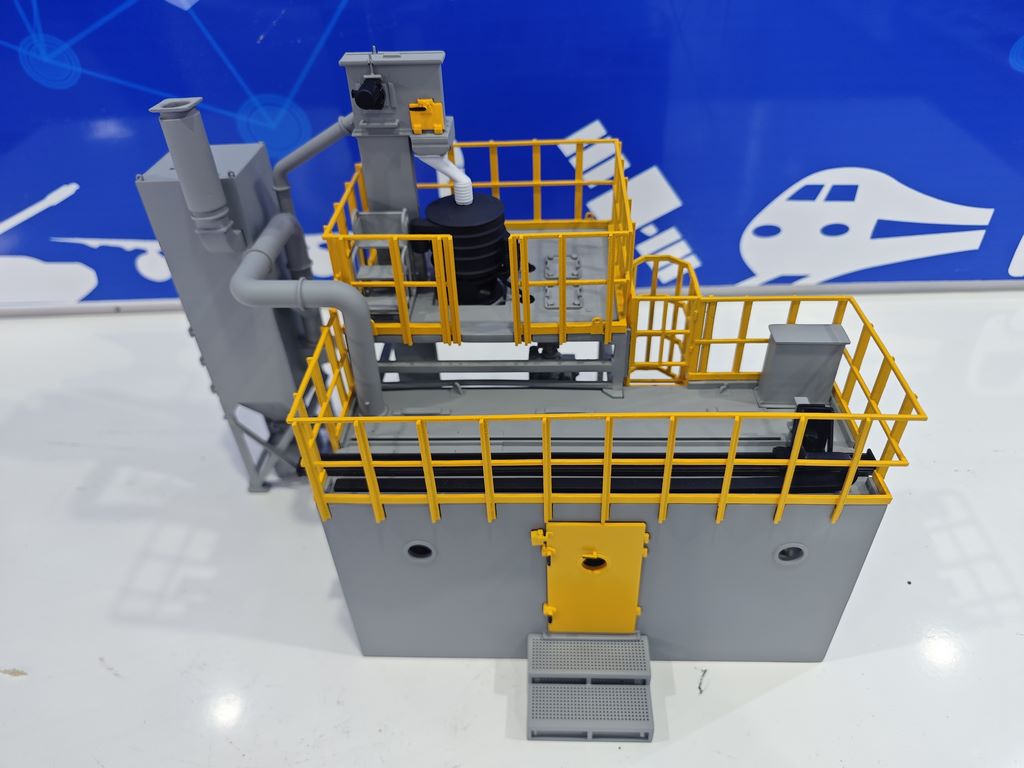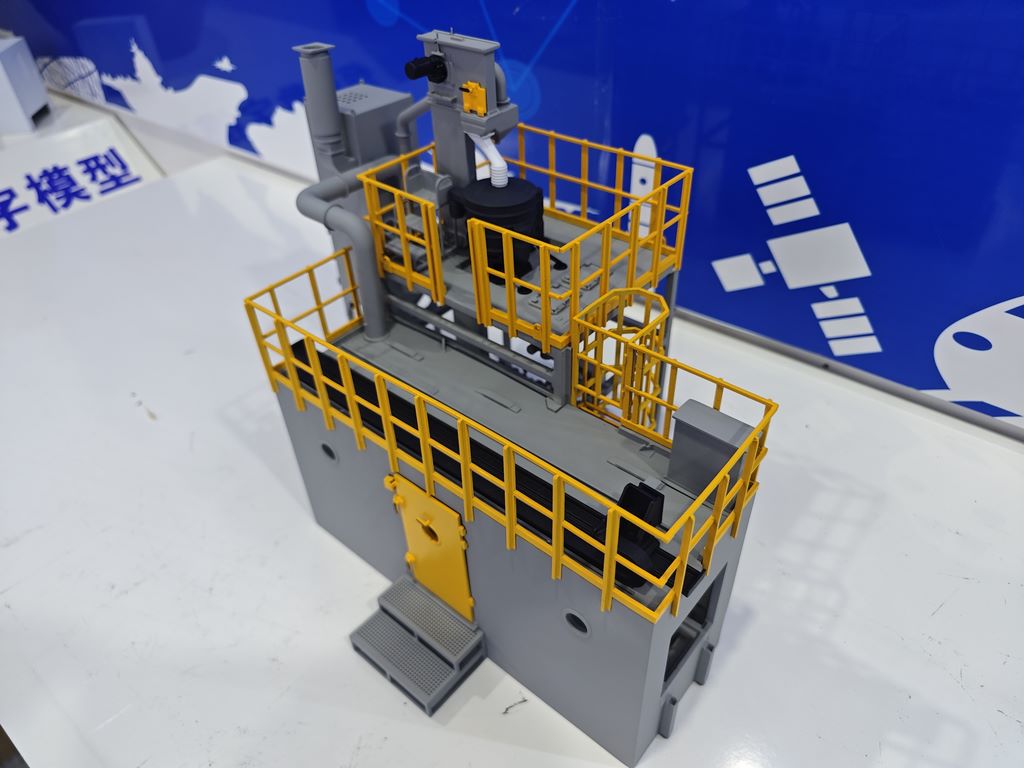Production of industrial equipment display models
Case study on the production of industrial equipment display models
1、 Project Overview and Production Objectives
This project aims to create a large-scale industrial equipment model for enterprise exhibition halls, with an overall scale of 1:30. The model needs to fully present the complex external structure of the equipment, including the main device, pipeline system, safety barrier, and auxiliary facilities. The focus of production is to accurately control the proportion and meticulously process the equipment to truly reproduce its industrial beauty and structural logic, with an overall restoration requirement of over 90%.

2、 Material selection and consideration of characteristics
The main structure of the model is made of 5mm thick ABS engineering plastic board, which has excellent dimensional stability and processing performance, ensuring that large models do not deform. The detailed components such as guardrails and stairs are cast with high-strength polyurethane resin to ensure the structural strength of small parts. The pipeline system adopts a combination of PVC pipes with different diameters, and achieves smooth turning at various angles through hot bending technology. The transparent observation window is made of 2mm acrylic sheet, which ensures both transparency and sufficient support strength.

3、 Production process flow
The model adopts a production scheme of “layered construction and modular assembly”. Firstly, according to the design drawings, the ABS board is cut into various flat components by a precision engraving machine, and all joints are spliced at a 45 degree angle to ensure tight joints. When assembling the main structure, special glue is used to match the plug-in structure, and reinforcing ribs are added to important load-bearing parts.
The production of pipeline system is the difficulty of the project, which requires the production of support frames first, and then the pre assembly of PVC pipes with different diameters according to the actual direction. The guardrail is precision cast using the lost wax method, and each column and crossbar has been carefully trimmed. The stair treads are laser engraved with anti slip patterns, and the handrails are rounded to ensure a smooth feel. After each module is completed, final assembly is carried out to ensure installation accuracy through positioning pins.
4、 Painting and surface treatment
Before painting, perform surface pretreatment on all components: use 400-2000 grit sandpaper to polish step by step to eliminate processing marks. Firstly, apply a gray primer as a whole to unify the base color and inspect surface defects. The main equipment is coated with dark gray matte paint, achieving a uniform coating effect through three thin sprays. The safety guardrails and stairs are highlighted in yellow and covered with a spray coating process to ensure clear and sharp boundaries.
The pipeline system is color coded according to its function: the main process pipeline is silver, and the auxiliary pipeline is light gray. Perform meticulous aging treatment at all structural connections, emphasize shadow layers with stain solution, and highlight structural edges with dry sweeping techniques. Finally, apply matte protective paint to unify glossiness and enhance the durability of the paint film.